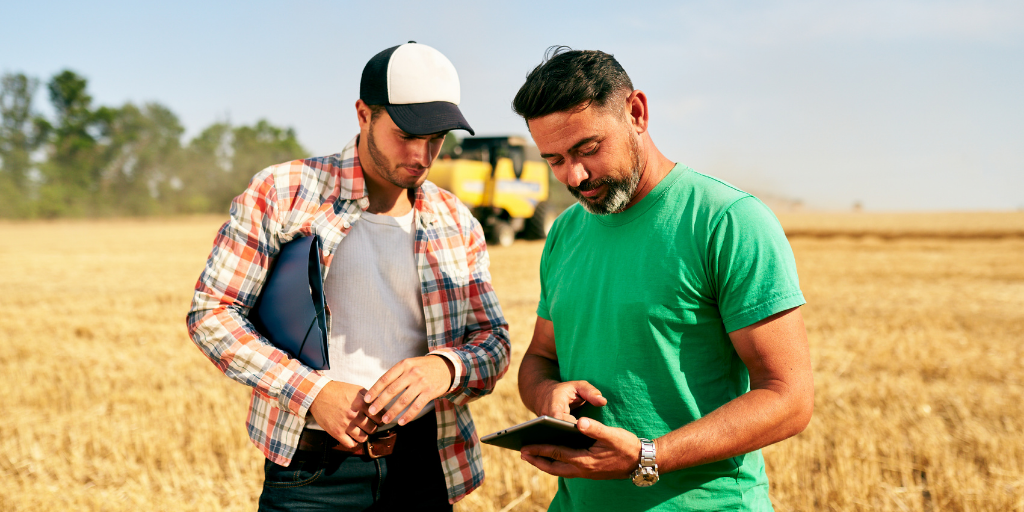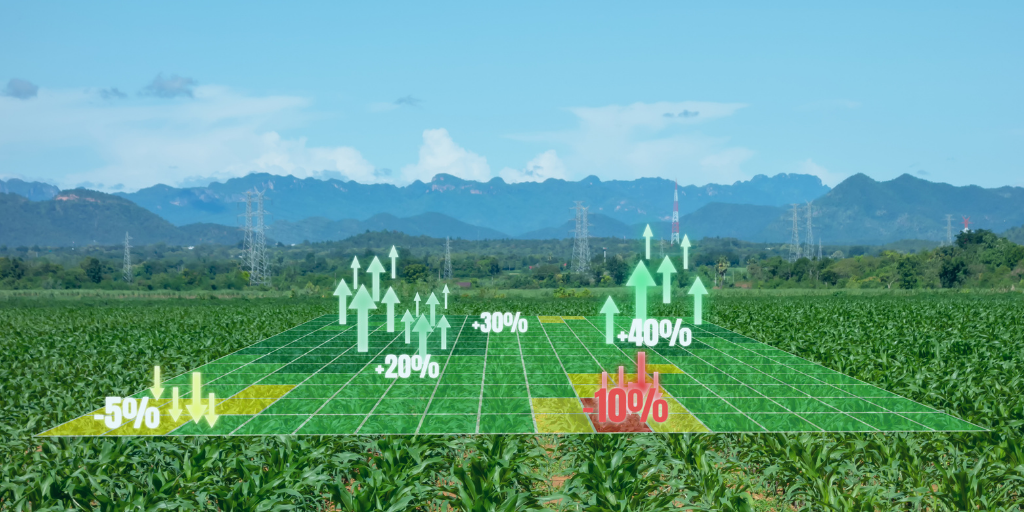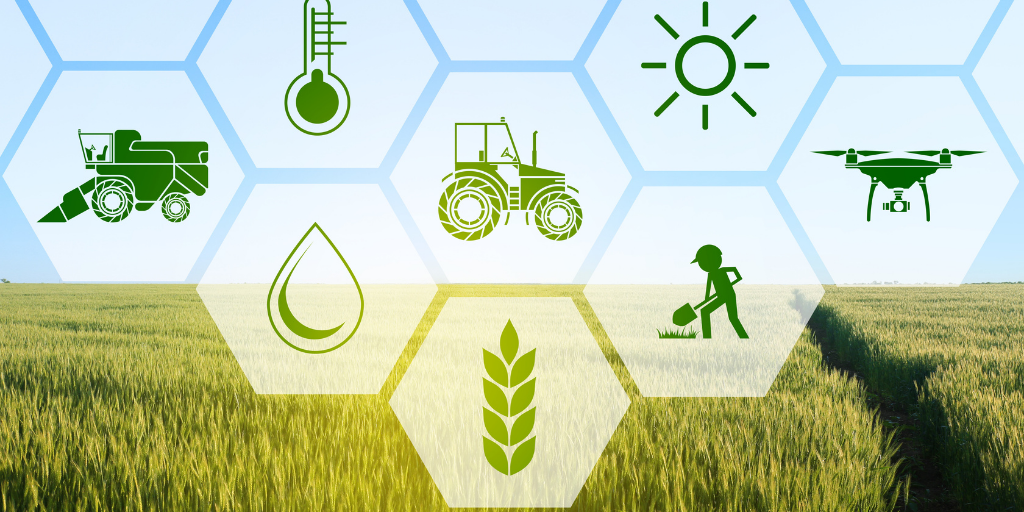From the Green Revolution to present, agricultural innovations have allowed for the rapid evolution of food production internationally. Along with innovation comes new terminology to articulate what’s taking place along the way. There’s precision agriculture, which has denoted the last few decades of tech’s integrations with farming. And then there’s more recent phrases like smart farming and digital farming. How do these terms fit together, and which apply to your operation practices?
When the Green Revolution moved into full swing in the late 1960s, technological advancements incited an unprecedented growth in agricultural production output. Breeding of high yield cereal crops as well as new fertilizers and pesticides have allowed for improved food security, and led a major reconstruction of food production, distribution, and consumption worldwide. Refinements to these developments are ongoing today, with increased access to data promoting fine-tuned growing practices across crop type.
Precision Agriculture
Often abbreviated by those in the industry to Precision Ag or even just PA, precision agriculture refers to the tools and techniques in agricultural production that are developed for optimization. Its principles focus on the granular measurement of crop production. The introduction of GPS guidance for tractors in the early 1990s marks the beginning of PA, and is now the most prevalent tool in the kit of tech-driven farming. Connecting GPS location data from satellites to tracker controls has enabled automatic steering based on field coordinates. This limits overlap passes, and results in labor savings and less input wastage. The present landscape of precision agriculture is shaped by two main trends: big data collection with advanced analytics, and robotics.
Precision agriculture is informed by precision agronomy – this includes tools that specifically improve accuracy in growing methodology. Things like mapping, soil testing, and remote data collection enable scalable strategies with a greater chance of success.

Smart Farming
Tools that provide connectivity and data access are categorized as smart farming. Smart farming asks, ‘How can collected information be used effectively?’ and includes all farm operations. Accessing real-time data about environmental conditions can be achieved with common smartphones and tablets, empowering crews to make decisions with hard data rather than simply intuition.
Having the means to obtain information on all factors related to crop production is accomplished not just by precision tools (like sensors that generate raw data), but by having a robust network connection out in the field. Smart farming works when all the machinery and tech in an operation can align efficiently, in spite of not being created by the same manufacturer.
Digital Farming
Digital farming points to creating value from data. Utilizing PA equipment and Internet of Things (IoT) integrations, advanced algorithms can effectively generate insights from the huge amount of data that’s already available.
Precision agriculture and smart farming are integrated into digital farming, and describes the execution of data-driven strategy as it relates to agricultural production. This is a nascent field (no pun intended!), with automated data processing and completely integrated networks not yet a reality. But it’s on the horizon. The European Agricultural Machinery Association offers some current day examples of digital farming applications in its 2017 white paper, such as:
Data as a technology enabler: Variable Rate Technology (VRT) based on soil sampling was initially limited to a handful of soil samples, but was improved with the yield monitoring input. The next step is to improve the variable rate maps with algorithms based on data from multiple fields, and taking into account parameters not directly related to the field itself, like seed characteristics and environmental conditions.
Improved production processes: Connected production processes, together with the (partially) automated collection and targeted analysis of data, permit a new level of transparency and evaluation of the current operating situation, providing new opportunities for operational control.
Decision support: For data processing, and in particular data analysis, expert systems are available to the end customer, which would be difficult or impossible for individual farms to attain by in- house data processing. In other words, farmers can now leverage a hitherto unknown level of knowledge from external partners.
Data exchange / benchmarking: Networking with external partners, and in particular the automated integration of information and data, leads to a considerably broader knowledge base and hence to well-founded, fast decision-making. Value (algorithms) is created based on data captured in other areas of the production chain.
Farm operations, inputs and outputs are optimised: seeds are optimised for the field and environmental conditions, equipment is optimised for the job. Data is used to enhance the performance of these input products with additional services.

Adoption rates of new tech
Since the proliferation of smart devices in the broad consumer market began in the 2010s, the adoption rate of precision agriculture in smaller operations has increased at a quickened pace. Mobile devices, high-speed internet, affordable satellites – all of these tools have a reduced barrier to entry than equipment like heavy-duty farm machinery, of which replacement requires a hefty upfront investment. Studies suggest an estimated fifty percent of growers currently employ at least one smart farming tool, and it’s the lower-cost data collection methods that allow smaller operations to be counted among precision ag adoptees.
When making large precision tech investments, operations must weigh the payoff of putting in the capital expense. Considering farm size, yields, and market prices are part of the decision making process. For example, returns are estimated per acre, so larger farms can afford to allocate a larger budget to trying new approaches. At the smaller end, for when an operation’s yield is less than 140 bushels per acre, research suggests that the adoption rate of technology-driven approaches is quite low, at less than seventeen percent.
Where Croptracker fits in
Regardless of farm size, optimization tools like Croptracker’s can elevate growing operations with precision agriculture principles in mind. Croptracker’s farm management tools are scalable, modular, customizable, and data-driven. With features that can be used as a standalone product or align with other PA equipment, Croptracker’s versatility allows for integration with a farm operation’s existing practices while providing digital farming analytical advantages.
Our farm management software collects data on just the parts of your operation that you need, like detailed spray records and GPS-enabled field mapping. Precision tools like Harvest Quality Vision (HQV) scanning allow the latter stages of the production process to flow without the guesswork. HQV predictive fruit pack-outs – closing communication gaps amongst the packing team as well as between operational teams and other supply chain stakeholders. If you know what you’ve got, you can work smarter. Make long-term decisions with integrated data, season after season.


